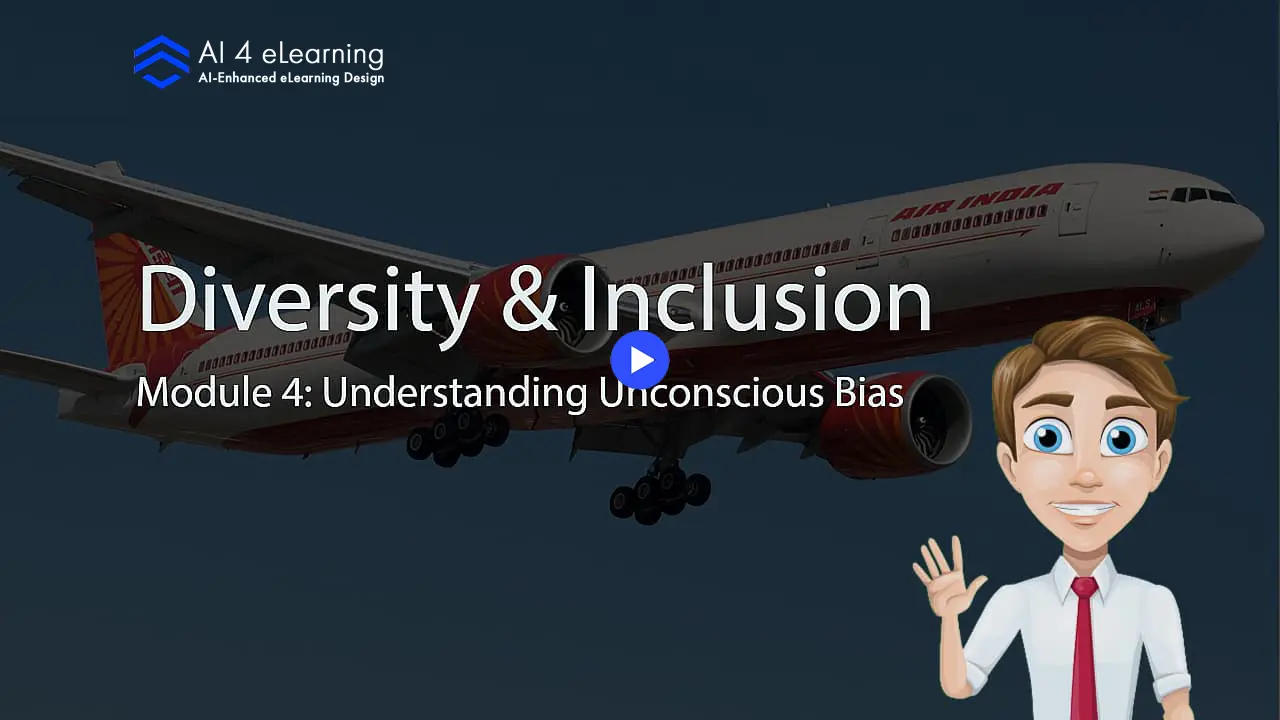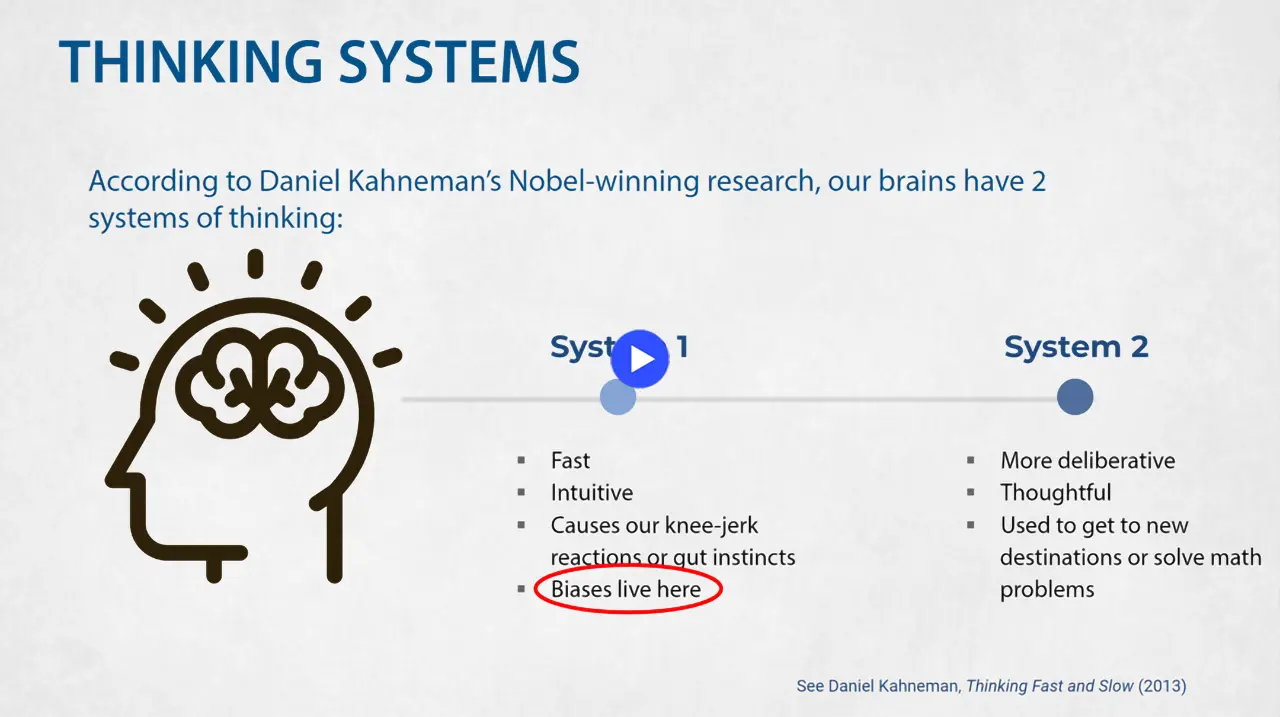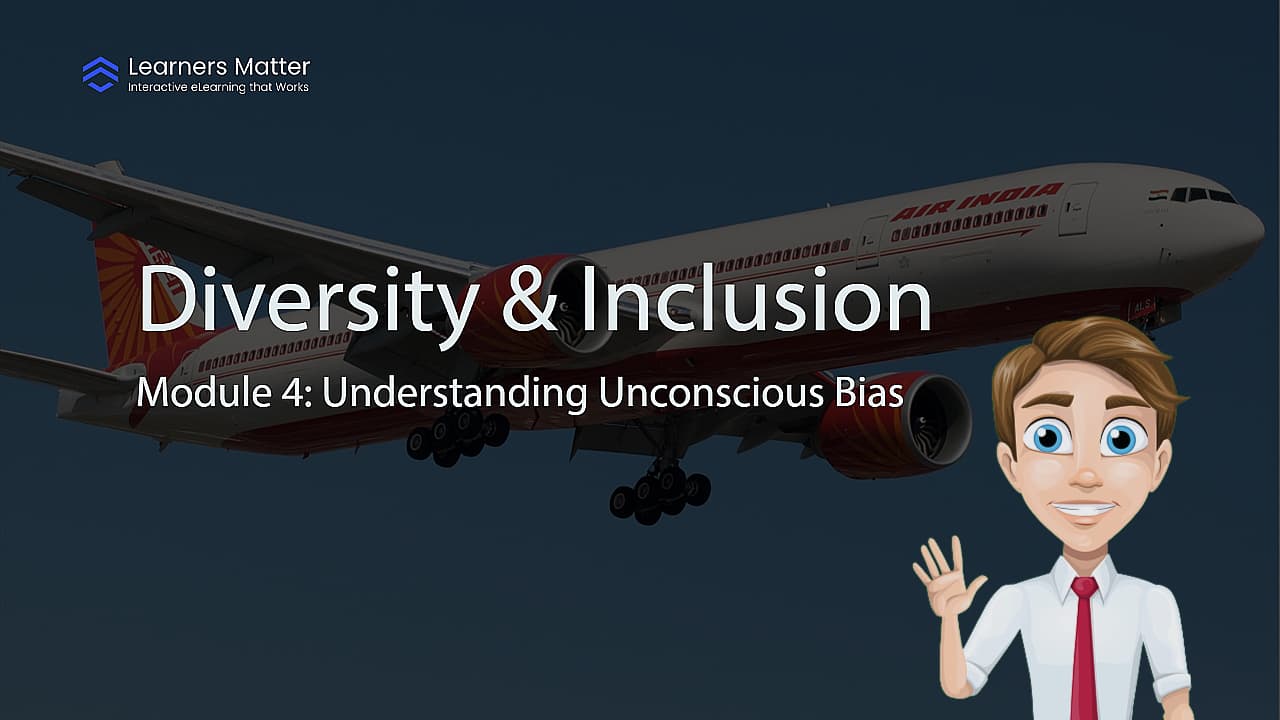Diversity, Equity, and Inclusion
Diversity, Equity, and Inclusion
Authored with Articulate Storyline 360
Overview:
In a collaborative effort to address the critical components of Inclusion, Diversity, and Equity within organizational structures, a comprehensive 4-module course was developed, culminating in a detailed exploration of unconscious bias. This final module aims to enlighten participants about the subtle prejudices that often go unnoticed yet play a significant role in perpetuating discrimination and inequality in the workplace.
Recognizing and understanding the intricate dynamics of unconscious bias are pivotal for fostering an environment where diversity and inclusion are not just encouraged but ingrained in the organizational culture. This initiative underscores the indispensable value of diversity and inclusion as catalysts for achieving enhanced productivity, fostering innovation, and heightening employee satisfaction.
The Challenge:
The primary challenge encountered in the development of this module was the need to effectively communicate complex concepts related to unconscious bias in an engaging and accessible manner. The module had to counteract deeply ingrained prejudices, requiring innovative educational techniques to alter long-standing behavioral patterns. Moreover, creating content that was both informative and compelling for a diverse audience, with varying degrees of awareness and understanding of the topic, presented an additional layer of complexity.
Strategy:
To address these challenges, the module included interactive activities and engaging videos. Two of the videos are shown below.

Introduction Video:
This introduction video served as a gateway to the module, featuring an animated talking head for a relatable and engaging presentation, an indigenous land acknowledgment to underline the importance of recognizing and respecting cultural diversity, and a human talking head to establish a personal connection with the audience. This multi-faceted approach aimed to set a welcoming and inclusive tone for the module.

Educational Video on Unconscious Bias:
To demystify the concept of unconscious bias, the second video provided a clear, concise explanation, employing relatable examples and scientific findings to illustrate how these biases are formed and the impact they have on decision-making and interpersonal relationships within the workplace.
Complementary to the videos, interactive activities, real-life case studies, and reflective exercises were incorporated to facilitate a deeper understanding and personal reflection on unconscious bias.
Results
Post-implementation feedback indicated a significant increase in participants’ awareness and understanding of unconscious bias and its implications. Employees reported feeling more equipped to recognize and challenge their biases, contributing to a more inclusive workplace culture. An internal survey highlighted enhanced communication and collaboration across teams, a decrease in incidents of discrimination, and an overall improvement in employee morale and job satisfaction.
Conclusion
The successful execution of the course development process underscores the efficacy of combining innovative educational tools with comprehensive content to tackle the pervasive issue of unconscious bias. By cultivating an environment that values diversity and inclusion, organizations can unlock the full potential of their workforce, driving growth, innovation, and equity. Moving forward, it is imperative for organizations to continue investing in similar educational initiatives, ensuring that diversity and inclusion remain at the forefront of organizational development strategies.
Diversity, Equity, and Inclusion
Authored with Articulate Storyline 360
Overview:
In a collaborative effort to address the critical components of Inclusion, Diversity, and Equity within organizational structures, a comprehensive 4-module course was developed, culminating in a detailed exploration of unconscious bias. This final module aims to enlighten participants about the subtle prejudices that often go unnoticed yet play a significant role in perpetuating discrimination and inequality in the workplace.
Recognizing and understanding the intricate dynamics of unconscious bias are pivotal for fostering an environment where diversity and inclusion are not just encouraged but ingrained in the organizational culture. This initiative underscores the indispensable value of diversity and inclusion as catalysts for achieving enhanced productivity, fostering innovation, and heightening employee satisfaction.
The Challenge:
The primary challenge encountered in the development of this module was the need to effectively communicate complex concepts related to unconscious bias in an engaging and accessible manner. The module had to counteract deeply ingrained prejudices, requiring innovative educational techniques to alter long-standing behavioral patterns. Moreover, creating content that was both informative and compelling for a diverse audience, with varying degrees of awareness and understanding of the topic, presented an additional layer of complexity.
Strategy:
To address these challenges, the module included interactive activities and engaging videos. Two of the videos are shown below.
Introduction Video:

This introduction video served as a gateway to the module, featuring an animated talking head for a relatable and engaging presentation, an indigenous land acknowledgment to underline the importance of recognizing and respecting cultural diversity, and a human talking head to establish a personal connection with the audience. This multi-faceted approach aimed to set a welcoming and inclusive tone for the module.
Educational Video on Unconscious Bias:

To demystify the concept of unconscious bias, the second video provided a clear, concise explanation, employing relatable examples and scientific findings to illustrate how these biases are formed and the impact they have on decision-making and interpersonal relationships within the workplace.
Complementary to the videos, interactive activities, real-life case studies, and reflective exercises were incorporated to facilitate a deeper understanding and personal reflection on unconscious bias.
Results
Post-implementation feedback indicated a significant increase in participants’ awareness and understanding of unconscious bias and its implications. Employees reported feeling more equipped to recognize and challenge their biases, contributing to a more inclusive workplace culture. An internal survey highlighted enhanced communication and collaboration across teams, a decrease in incidents of discrimination, and an overall improvement in employee morale and job satisfaction.
Conclusion
The successful execution of the course development process underscores the efficacy of combining innovative educational tools with comprehensive content to tackle the pervasive issue of unconscious bias. By cultivating an environment that values diversity and inclusion, organizations can unlock the full potential of their workforce, driving growth, innovation, and equity. Moving forward, it is imperative for organizations to continue investing in similar educational initiatives, ensuring that diversity and inclusion remain at the forefront of organizational development strategies.

